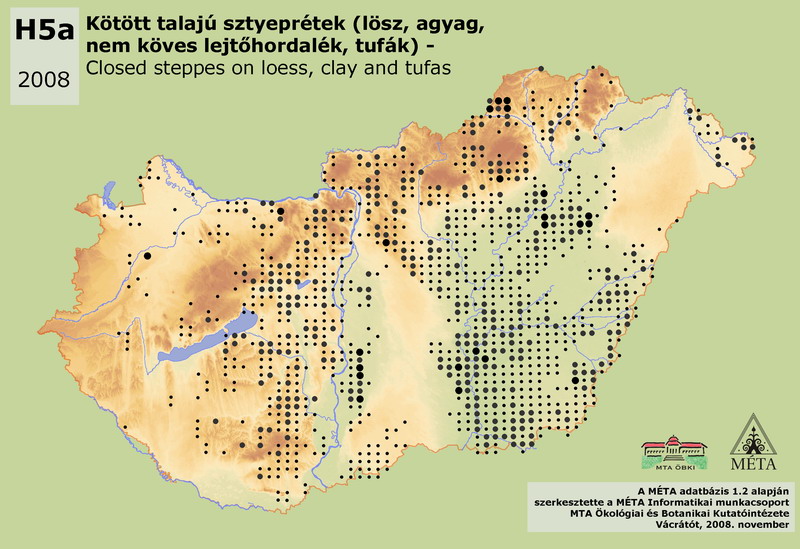MÉTA Program >>> Habitat distribution maps


H5a – Closed steppes on loess, clay, tufa:
Closed steppes of usually humus rich soils developed especially on plain and foothill loess, secondly on all solid bedrock except sand. Mainly Festuca rupicola, often Bromus inermis, Elymus hispidus, Stipa species and Bothriochloa ischaemum are their dominant grass species. Their total area is around 25000 ha. An additional 1500-2000 ha have uncertain classification (in the Heves-borsodi- and Putnoki-dombság). The habitat occurs with the largest extension on the loess islands of saline pusztas, as well as on the road verges, earth works, and county-boundaries of Tiszai-Alföld (11800 ha), but most of the stands are heavily degraded. Much more species rich stands remained on the foothills of the Északi-középhegység (approx. 3800-4300 ha) and in the Dunántúli-középhegység (1850 ha). On Dunai-Alföld (3700 ha) the less degraded occurrences are mainly on Mezőföld, only species poor stands remained on the loess-like sediments on Duna-sík. Closed steppes can also be found in the eastern, drier part of the Dunántúli-dombság (2000 ha). By reason of the infrequency of suitable sites they are uncommon on Kisalföld (440 ha) and on Nyugat-Dunántúl (approx. 100–140 ha).
Molnár, Zs., M. Biró, J. Bölöni & F. Horváth (2008): Distribution of the (semi-)natural habitats in Hungary I.: Marshes and grasslands, Acta Botanica Hungarica 50 (Suppl): 59-105. >>> letöltés (5,4 MB, PDF)
MÉTA Program,
MÉTA Fotótár
MÉTA Élőhely-Ismereti Útmutató (ÉIÚ),
MÉTA Adatlap-Kitöltési Útmutató (AL-KÚ)
(C) MÉTA Informatika, 2005-2009,
MTA Ökológiai és Botanikai Kutatóintézete